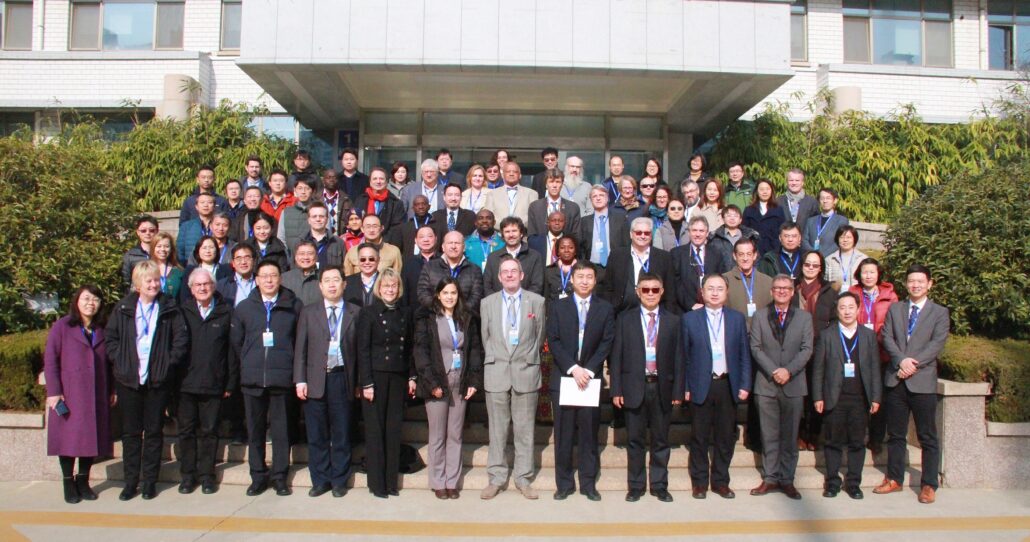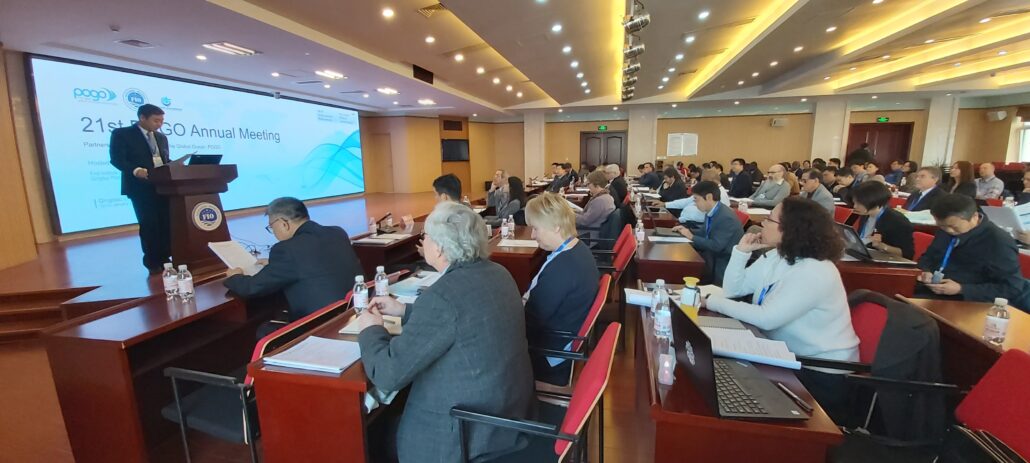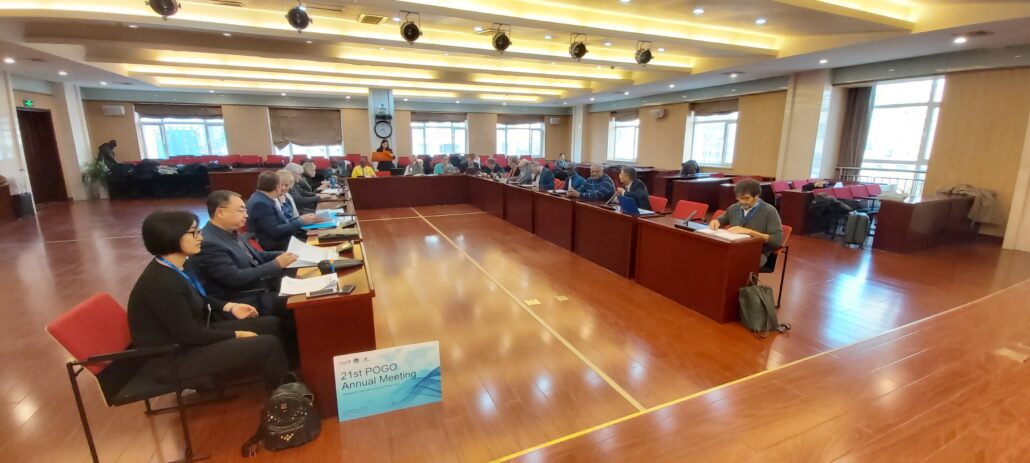The members of Partnership for Observation of the Global Ocean are ocean science, technology and academic institutions from around the world, represented by their Directors. To become a new member, these representatives should contact the CEO of the POGO Secretariat via pogoadmin@pml.ac.uk
The level of membership dues is defined by the institute size and the economic status of the country of the Member.



Membership benefits
By becoming a member of POGO, your institute will be recognised as belonging to the group of the world’s major oceanographic research Institutes, and will actively contribute to developing the global agenda for ocean observing. Benefits at a glance are:

Attending Annual Plenary Meetings
to discuss issues of mutual concern with the Directors of our member oceanographic institutes at our annual meetings

Sharing best practices, infrastructure and data
e.g. through POGO’s Cruise Information Database; best practices in industry engagement and communications

Connecting with global organisations and programmes
such as the Group on Earth Observations (GEO) and its Task “Oceans and Society: Blue Planet”

Being represented at major public outreach events
e.g. World Expo, GEO Ministerial Summits, UNFCCC Climate Change Conferences

Enhancing visibility for your institute
e.g. through the POGO website, newsletter and Plenary Meetings

Participating in POGO’s prestigious observational training programmes
such as the NF-POGO Centre of Excellence or POGO Training Initiatives

Proposing collaborative ocean observing initiatives
by engaging in POGO working groups with other POGO members and apply for contributions to working group funding
What is the cost of POGO membership?
POGO is a subscription-based organisation, with two types of membership:
- Full membership (dues-paying, voting status, for oceanographic research and academic non-profit institutions)
- Associate membership (dues-paying, non-voting), for (a) oceanographic research and academic non-profit institutions who cannot be bound by the Constitution) and (b) private, for-profit companies with an interest in ocean observations). Membership dues fall into 21 categories, based on the country where the member institute is located and the size of the member institute.
Step 1. What is the Country Category for my institute?
If your institute is located in one of the countries listed in Table 1, you can check your ‘Country Category’. For countries not listed here, the POGO Secretariat will provide the necessary information based on the latest data from the World Bank. Contact us to find out.
| Country Category | Countries |
|---|---|
| Least Developed Countries (LDC) | e.g. Angola, Bangladesh, Benin, Ethiopia, Madagascar, Mozambique, Senegal, Sudan, Togo |
| Other Low Income Countries (OLIC) | e.g. Syrian Arab Republic |
| Lower Middle Income Countries (LMIC) | e.g. Cabo Verde, Cote d’Ivoire, Ghana, India, Kenya, Lebanon, Morocco, Nigeria, Pakistan, Philippines, Sri Lanka, Tunisia, Ukraine, Vietnam |
| Upper Middle Income Countries (UMIC) | e.g. Argentina, Brazil, Chile, Colombia, Ecuador, Indonesia, Malaysia, Mauritius, Mexico, Peru, South Africa, Thailand |
| A | e.g. China, Croatia, Estonia, Greece, Italy, Latvia, Lithuania, Portugal, Saudi Arabia, Spain |
| B | e.g. Australia, Canada, France, Ireland, United Kingdom |
| C | e.g. Belgium, Denmark, Finland, Germany, Israel, Netherlands, Norway, Japan, Republic of Korea, Sweden, United States |
Step 2. What is the Size Category of my institute?
Calculate your institute’s number of marine science staff (including scientists, technicians, administrative staff; excluding students, volunteers, and ship’s crew) and check the Category in Table 2.
| Institute Size Category | Number of Marine Staff |
|---|---|
| 1 | Up to 200 |
| 2 | 201-500 |
| 3 | Over 500 |
Can several institutes join as a Consortium?
Individual institutions from the same country are permitted to form a consortium if they have 50 marine staff or fewer (for Country Categories A, B, or C), or if they have 100 marine staff or fewer (for Country Categories LDC, OLIC, LMIC, and UMIC). Consortia will pay their dues according to the total, combined number of staff (as defined in Table 2).
Step 3. What level of dues will I be required to pay?
Refer to the membership dues in Table 3.
| Annual membership dues in EUR | Institute Size Category 1 | Institute Size Category 2 | Institute Size Category 3 |
|---|---|---|---|
| Country Category LDC | 260 | 410 | 565 |
| Country Category OLIC | 515 | 825 | 1,130 |
| Country Category LMIC | 1,030 | 1,650 | 2,265 |
| Country Category UMIC | 2,060 | 3,270 | 4,455 |
| Country Category A | 4,240 | 6,730 | 9,170 |
| Country Category B | 4,925 | 8,025 | 10,490 |
| Country Category C | 5,620 | 9,350 | 11,880 |
Introductory rates for low-income countries:
To facilitate the membership of institutions from low-income countries (LDC, OLIC, LMIC and UMIC), the following rates will apply for the first 3 years of membership:
- LDC, OLIC and LMIC countries: no fee for the first two years, followed by a 50% reduction in membership dues for the third year;
- UMIC countries: 50% reduction in membership dues for the first two years.
Step 4. How do I apply for membership?
All that is required to apply for membership is a letter providing an overview of the prospective member institute’s activities and its alignment with POGO interests, for review by the POGO Board of Trustees.
